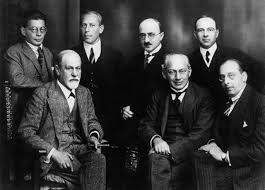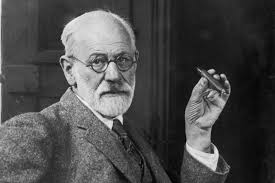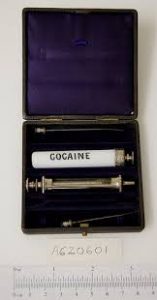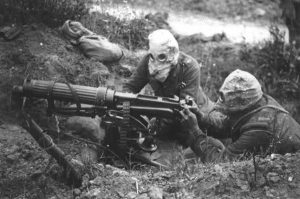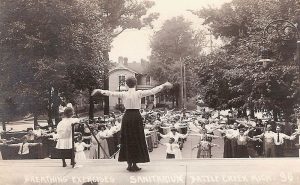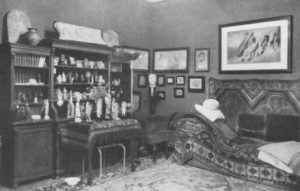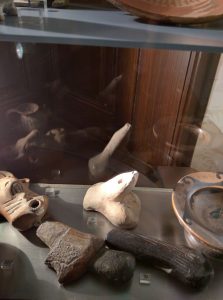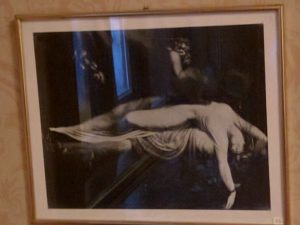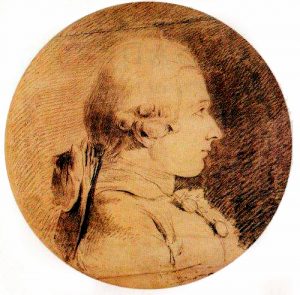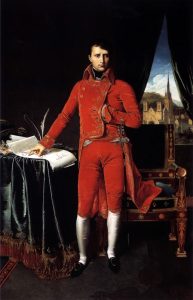
This post is dedicated to the dead, wounded and traumatized in the Pulse nightclub shooting and all those who love them. It is also dedicated to those who sense of safety has been diminished by this horrific act. Potentially, that is a lot of people, including the author. Although gay, lesbian, queer, trans, and gender fluid people know less safety than many of us, all of us are correct to feel that the realities of terrorism, anti-homosexual ideology, and toxic masculinity make us less safe than we may have previously imagined. Finally, I want to particularly spotlight Eli Green, AASECT Annual Conference Co-Chairs Melissa Keyes DiGioia, and Mariotta Gary-Smith who worked so hard to promote safety at AASECT16 when we were threatened by a lesser invasion that was only made more disturbing by the Pulse shooting.

Kinksters are very concerned about safety. It is possible to be an outsider with relatively low levels of stigma, but when you know that your sexuality is judged as threatening and crazy by others, you carry stigma about it even when you are not out, and when there is no immediate threat. All kinky people are vulnerable to some social stigma, and, depending on their preferred practices, many are vulnerable to legal prosecution as described in previous posts on Elephant. Even before learning about kink communities, potential members learned to conceal their sexual desires, to manage double lives, to handle internal and external stigma, and to control as much as they can how others perceive them.
Social Participation:
 |
| Is it safer to be out or not? It depends on which risks are important to you. |
So the first line of kinksters’ defense in the struggle for safety is not being out. In the 2014 Consent Violations Survey, 70% said they were not out to someone. We didn’t ask, but there is a large but unknown number of kinky people who have never been out to anyone. They were not likely to have been in our sample. These are people who learned their desires were forbidden before they ever had the opportunity to express them. They may be so afraid they do not act on them ever. Why I periodically take issue with the ‘sex addiction’ discourse here on Elephant is that some children and adolescents fear to masturbate to their fantasies for fear of becoming addicted and losing control of how other people perceive them. They internalize stigma and feel shame and hatred of their desires. So for the fearful, the price in judgment of knowing themselves can be enforced celibacy and lonely secrecy. Is it any wonder that out kinksters are often counterphobic? To own their sexuality, they have no alternative to facing their fears.
Because sexuality is a private matter in conventional public life, one does not need to lead a double life to be kinky. An unknown number of kinky couples exist out in the world who read books, or respond to movies or other media, or are introduced to kink by a partner and take to it like a duck to water. They recognize that they have kinky desires, and reveal their kinks only to a few willing partners and achieve safety through appearing conventional in everyday social life and doing as they please in bed. They hide their toys from the kids, and lock up everything when guests come to stay for a few days. For these people, safety may feel routine and pose modest psychological burdens. The more polyamorous one is, the harder this is to pull off, because it is harder to conceal multiple partnerships under the cloak of hetrro-normativity. For most gender fluid clients it is impossible, and for gay clients, so-called marriage equality holds out some hope that they too can avoid stigma through maintaining sexual privacy that previously was available only to heterosexuals.
 |
| A wise words from Oscar Wilde. Come to think of it,though, didn’t he do time for being out! |
For others, the inability to tell significant others about their desires leads to behaviors we would consider risky. They chose to lead double lives. They contact other people through personal ads and express their kink outside of their primary relationships. They decide the fears of relationship loss are the lesser of the evils relative to never discussing their desires. We often interpret the resulting secrecy and duplicity as proof that they do not value their relationships, but it would be equally true that they value them too much to risk speaking of their kinks! (Lest you credit me with this gem, know that I learned it first from Ether Perel’s work on affairs!)
Leading double lives can be elaborate, and sometimes the rituals of doing this become eroticized. Contacting new partners who might accept you and share your excitements can be hot. So can doing something illicit. So swiping the correct direction can feel like rolling the dice, and you may feel a rush when the object of your intense interest responds with an encouraging text message. In the past, kinksters chose aliases and wrote away to re-mail services. Sometimes letters arrived saturated in perfume, and filled with sexy pictures. Now mostly this happens electronically.
 |
| Did someone say “Red Room of Pain’? This is actually from a bondage B&B in Edinburgh |
Wealthy people build secret dungeons equivalent to Christian Grey’s Red Room, and hold private parties by invitation only. Despite the intimacy of play, they may not know one another’s real names, occupations or marital statuses. At CARAS every year a therapist discussion group is held for kinky therapists who worry about managing their caseloads of kinksters in the incestuous environment of their local scene, and worry that if they play anywhere 300 miles from the office that a client’s therapy will be damaged by an unplanned social meeting at a kink event. So the sources of unsafety, and the complexity of solutions when a double life is undertaken, can vary tremendously and require a huge amount of attention and energy. When the burdens of maintain these arrangements become too great, safety is often sought in therapy, as kinky clients worry that the burdens of dealing with stigma constitute proof that their kinks are ‘pathological’.
Of course, double lives can provide one kind of safety at the expense of other dangers. Lying and deception can sour the relationship with the primary partner and destroy trust. Partners that might have lovingly faced their own fears and judgments about kink might lack the trust to make the attempt if they discover yours only after learning about a prolonged deception. All the things one sought to protect with deception can be precipitously damaged when deception fails. Therapists long experience with secrets suggest secrets and confidences tend to slip out more frequently in times of acute stress, conflict and crisis, such that damage can be very hard to contain and repair. Therapists as a community tend to be pro intimacy and pro honesty and to question the benefits of double life behaviors, so people using these face psychological risks of being confronted about their relationship strategies in therapy. Kink-aware therapists can be expected to handle these situations in non-directive and client-centered ways.
Informed Consent as a source of safety:
Negotiation and contracting are the foundations of kink safety. In their ideal form they operationalize informed consent. Ideally, they work best if the following conditions are maintained continuously:
Equality: The parties in the negotiation come to the negotiation form a place of existential equality and negotiate freely as equals.
Honesty: Each participant has good communications skills and negotiates honestly about what they do and do not want.
Empathy: Each participant has a high degree of empathy for the other parties in the negotiation.
Limited but Shared Interests: The parties negotiate with a flexible acceptance that negotiation partners have not only interest that align, but also differences that do not, and they are prepared to be accepting of the irreducible differences.
Self-Discipline: Each participation maintains discipline about their expectations.
Risk tolerance: Each participant is aware and tolerant of the risks of negotiation.
Explicit agreement: The negotiation is explicit and limited in its specifications of what is to be agreed.
The negotiation contains serious considerations of what might go wrong, and has a safety plan for dealing with potential problems if everything agreed to does not proceed smoothly and expectable difficulties arise.
It is important that the above description is my ideal statement of negotiation for informed consent. In actual practice, actual negotiations rarely maintain ideal standards on all of these dimensions.
 |
| This Your E-Card is a great example of how 50 Shades of Grey has altered the conversation about kink. |
Contacts often lead to the expression of hard and soft limits. Hard limits are activities that you do not want to do under any circumstances. If you have breathing difficulties, that might mean no gags, ever. A fear of spiders may mean no role playing Little Miss Muffett. If you have a prominent public position, that may mean no pictures, or no scenes where you are locked outside the hotel room naked for the excruciating thrill of humiliation. Soft limits are limits you are prepared to relax under special circumstances. Examples might include no public play unless we are a safe distance from home, or unless you are masked and hooded. Someone who was afraid of her potential for angry reactions might only agree to sensation play when she’s securely bound so she doesn’t hit back. Or some behavior which was extremely hot and anxiety provoking might be OK in private play, but never OK in a group scene. Using negotiation, hard limits and soft limits, kinksters can titrate their fears and desires and their desire for risk and adventure with their needs for safety into scenes that have the best chance of being fun and sexy.
 |
| From Niiad.com This one hit a little too close to home; our cat’s name is Khatzie! So sue me! |
Safewords and contracts are about safety. Although it may be hot to imagine that you are helpless at the hands of a sexy sadist, cramps, sudden illness, an accident, or emotional triggering can all lead to dangerous situations in which ending the scene immediately is imperative. Often kinksters play with making safewords less safe, by making them long or difficult to say, or by imposing penalties for using them. Also, submissives often try to avoid using their safewords under the theory that good role players don’t do such things, or the top might be hurt or inconvenienced. These are a dangerous ideas, but also illustrate one of the key safety principles of kink: that one never has to be any safer than they want to be. Much safety in kink just about doing your best to make an informed choice about exactly the level of safety you want, and about the human fallibility of getting it.
Aftercare is partly about safety. Getting emotional support and processing your experiences are important parts of getting safety both through sharing understanding of your experiences, processing any problems that arose, and consolidating possible new learnings about yourself from play.
Community Safety Resources:
Please note that the photo and links immediately below are from commercial sites, and some videos may require you to pay a fee and/or subscribe. By way of personal disclosure, some videos may be by personal friends and professional colleagues of the author. I have received no fee or other commercial consideration for using these examples.
 |
| What? There are only 50 skills? This piece of shrewd marketing to newbies is from KinkUniversity at Kink.com, an excellent source of on-line kink training videos. Kink Academy.com is also recomended. |
Kink Academy
 |
The logo of The Eugenspiegel Society in New York City. The United States first aboveground kink social group founded in 1972
|
 |
| Society of Janus, the second oldest kink social group, marching in the San Francisco Pride Parade. |
There are now a great many local BDSM social communities in medium and large cities and many university campuses. The best palce to locate a local group is on FetLife.com
Joining a kink community can have risks, like being more ‘out’, but often puts people in touch with many new sources of safety. Kink communities endlessly educate, and safety is very often a main theme of kink educational sessions. Kink groups often provide mentoring programs for new members. In mentoring programs, safety is learned directly by processing one’s own emotional reactions with experienced players. Mentors can help you decide what new things you are ready to try and under what conditions you are most likely to enjoy them. They can serve as sounding boards that help you understand what your actual play partner might be thinking and feeling when they are doing new things with you. Good mentors check on your safety techniques to help make sure they are working as you intend and as they are intended to work in the community you are joining. Direct instruction can teach about safewords, safe play methods, the physiological consequences of different techniques and behaviors. It is a typical feature of mentoring programs that mentors do not play with their charges. This makes it easier for mentees to keep clear that sexual self-interest is not coloring the mentor’s advice.
Often, kinksters chose close confidants to be their ‘safeties’ from within their local communities. A safety is a person who serves as a spotter for you when you are playing. They are similar to people who help keep you safe when you are practicing trampoline or diving. They can observe while you contract and watch with neutral eyes while you play. Sometimes another pair of eyes will serve to deter someone who would go beyond their agreement with you because such behavior would make them look bad in the eyes of the community. Safeties can stop play, or question it, if something appears to be going amiss, even if you are in top or subspace. When you make explicit arrangements to visit a private party or other venue, you can arrange to text your safety with where you are and when you plan to report in so that someone else knows you are safe and can call for help if you fail to check in. Safeties don’t just deter other people who might not be careful or scrupulous enough not to harm you, but also can serve as an experienced and neutral source of judgment in helping you to keep from taking greater risks in the heat of desire than you intend to. Safeties differ from mentors in that they are often relative equals, and often they are in the same roles you prefer to explore in the community. Different people can play the role of safety for you at different times, where as a mentoring relationship is usually filled by just one person and for a prearranged period.
Friends can serve as support for discussion and understanding what you have experienced. Those in the scene are a valuable source of information about norms and community history. Just as Elephant in the Hot Tub is often about context, knowing and influencing the context of where you play and who you play with can be an important source of safety information and risk. Friends can help with those efforts.
Actual playing technique is often a source of safety. Many things you see on Porn Hub and kinky illustrations are either artistic license, or scenes carefully crafted by unique and highly experienced models. Just because you can fantasize doing something and get off on it does not necessarily mean you can do it safely. Educational sessions can keep you from practices that might lead to injury or worse if done without instruction. For example, many kinksters lack partners and engage in self-bondage. If it is important to you to be genuinely helpless, it is a real risk that if you tie yourself up that you will be unable to free yourself. Furthermore, positions that are hot for short periods can become highly uncomfortable or dangerous if circulation gets cut off or cramps ensue. Learning ways to free yourself may seem self-defeating, but may spare you the embarrassment of calling the authorities, or neighbors to get free, or suffering genuine injury.
 |
E Gary Gygax makes an animated guest appearance on Futurama as a Dungeon Master.
This is not the kind of Dungeon Master we’er looking for.! It is another one of those wonderful multi-cultural double entendres like CBT. The term Dungeon Master arose independently and nearly simultaneously in the 1970’s in D&D and BDSM sub-cultures. |
In group playing situations, Dungeon Masters operate to ensure that group rules about play and personal conduct are observed. Those of you who attended the Taste of Kink event in Minneapolis last June saw both safeties from AASECT and Dungeon Masters from the demonstrating local group in operation. Play groups and BDSM social organizations always have policies. Alcohol and drugs may be banned, both to protect players’ states of mind and to ensure that authorities do not have an excuse to raid playspaces. Personal touch and touching of others’ equipment is generally prohibited, in part because people with past histories of boundary violations have been known to test limits like these and such rules bring their attention to group leaders. Photos and recording are prohibited to protect group members’ anonymity and privacy. Dungeon masters are generally senior and high status members of the community who have a broad familiarity with techniques, and can observe that play is safe and have full authority to stop it.
Groups also often have reporting policies in the event that people make complaints about a group member’s behavior. Often there is considerable dispute about the ways that communities regulate play, and what rules the community should adopt. A climate of anarchic radical personal responsibility prevails. But leathersex traditions and histories of community violators have led most to have them. Therapists of new community members should ask them to enquire of their kink social organization about what the response procedures are if something untoward happens.
It is common practice in kink social organizations for new members to ask for references when playing with someone for the first time, and this is especially true when playing outside the group playspace. References are far from infallible, but using them to rule out problem players is a really good idea. In the 2014 Consent Violations Survey, references were not always sought, but when they were, 74% of reported violations were committed by someone with a good or excellent rating, so references are not infallible protection. They are mostly useful to weed out known unsafe players.
 |
| A group photo of participants from the Folsom Street Fair (FSF) ironically serves to illustrate dress codes. Ironic because FSF is a rare event with no dress code, and no prohibition against photography. You automatically consent to being photographed, and that is why I often select it for stock photos. Although black is not required, yet it is very prevalent. |
Dress codes are often enforced at kink events. These offer the relatively weak protection that the people who attend kink events are actually kinky, not passing tourists or voyeurs who do not share group norms and commitments. Depending on the group, these dress codes can be pretty broad, and offer rather little additional safety.
Trigger warnings and trauma safety: Some kinksters play despite trauma histories. It may seem surprising, but some explicitly play with past traumas. Many kinky social groups are already familiar with this possibility, and they may have members who are trained and familiar with trauma, and systematic efforts are made to make sure not only that participants are aware when intense experiences are planned, but they also have support if a participant or observer reacts unexpectedly. If you know your vulnerabilities, it is good to share them before you play and have a support plan prepared ahead of time. Informed consent is not just important for you, but for those who play with you.
Munches are social meetings where kink is discussed, but there is no play. Meetings are generally in local restaurants. The fact that they are in public space with no play scheduled makes them safe from physical boundary violations, but may be uncomfortable for people who do not want to be observed discussing BDSM in public. Munches generally do not have dress codes so that new members are not outed by hanging out with leather clad ‘undesirables’. Sometimes people go off and play together from munches after sizing each other up in safe space, a practice commonly practiced in all forms of on-line dating. Obviously if you leave a munch with someone you like, you have the potential for privacy, but loose the protections of public space. Munches provide a great way for new members to size up the people in the group, and to make judgments about how much they would like to share of themselves with group members. Many people who are attracted to kink are not comfortable with playing in public, so it is quite likely that those who join kink social organizations and play together are among the more adventurous for whom the voyeurism, exhibitionism, and group processes are not barriers to entry.
Attitudes, Values, and Process that Produce Safety:
Gradualism is a characteristic of safety strategy in which new recruits to any sub-culture gather information, try out new behaviors, test their assumptions against experience, and develop new commitments, identifications, and even sexual orientations. It provides the time and information to bring feelings and knowledge into integration, and allows the building of new relationships that support social participation in the sub-culture. Munches are a deliberate part of this plan, and they exist also for asexuals, old friends, and newbies to meet together where the possible pressures of sexual excitement are less, and friends can interact at whatever level of participation they prefer. The social rules in play groups are more strict, and munches can be a relief from some of these. Sometimes psychological safety means being protected from your own desire and the desire of others, and a relaxing of social roles that are otherwise very exciting to play out.
An attempt has been made here to be exhaustive about the kinds and sources of safety in the kink community, and to discuss both generic and arcane aspects of kinky communities that help people manage their risk taking behavior. Obviously, a truly comprehensive list is impossible, and for all these efforts, safety is never complete. I strongly encourage readers to add additional examples of safety to this thread using the comments section. Eventually, many people who do not know the conventions of the kink communities will read this article and profit from consideration of your commentary.
This week’s horrifying attack on the Pulse Disco in Florida is a shattering demonstration that, despite the fact that terrorism constitutes a very modest threat to American citizens—you are in much greater danger from falling in your bath tub, let alone negative health consequence’s for your diet, lifestyle or traffic accidents—safety is never complete, and kink involves deliberate risk taking. This article eschews the usual kink slogans of SSC or RACK, but love and sex and spiritual pursuits all entail risk. The kink communities know this, accept it, plan for risk and for things to go wrong despite everyone’s best efforts.
Not everyone is benign. Not all players are skilled in all things. Highly skilled people still make errors. Even those of us who strive continuously for self-knowledge have limitations.
Prevailing community attitudes produce safety: A general ethos prevails in BDSM of radical personal responsibility. Radical in that, in the face of laws and norms that may make some kink activities illegal, many kinksters make up their minds to do them anyway. But the responsibility for risk taking until laws and social attitudes can be changed remain theirs. This attitude may assume some risks, but is inclined to see responsibility for one’s safety as primarily one’s own responsibility.
In that spirit, when assuming responsibility for your own emotional safety, aftercare with your play partners is important, but it is also necessary to plan for your own self-care when trouble disrupts your plan to receive care from others who may become unavailable. It is in precisely that spirit, that this blog provided the link to an excellent sub and top drop safety kit:Top and Sub Drop Safety Kit
 |
| Analogous to kink? Serious leisure. |
Kink has provided all these safety tools and resources because we live in a word where complete safety is not always desirable, and the panoply of different kink loves, activities, needs, and risks is so great. Kink demands communication because any given partner’s knowledge and skill in the midst of this diversity cannot be assumed. Although many dating sites have tried kink activity checklists as a place to begin discussions with potential partners, they are not a very big start. There is a lot of safety to talk about and lots to learn. Emily Prior and DJ Williams have likened kink to extreme sports; a kind of serious leisure in which participants become partially professionalized. Skills offset risks, and ideology embraces planful risky behavior. Unlike extreme sports governed by the logic of athleticism and competition, kink embraces unreasoned passion as a primary motive for play, so the serious leisure analogy isn’t perfect. Whether you accept their sociological analogy or not, kink requires lots of safety. But many people have faced the same safety problems before you have, and they have a large history of solutions.
© Russell J Stambaugh, June, 2016, Ann Arbor MI, All rights reserved













